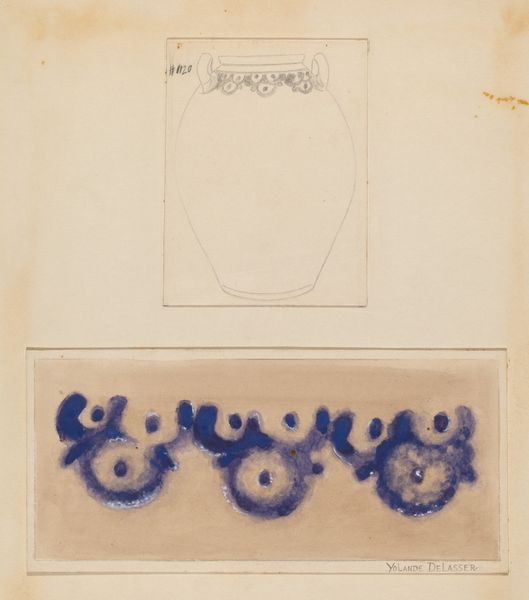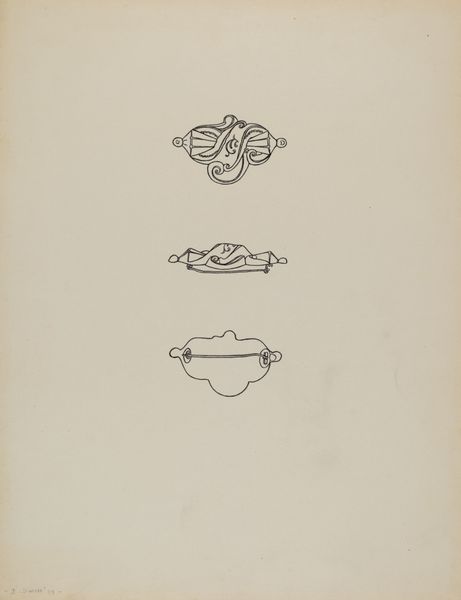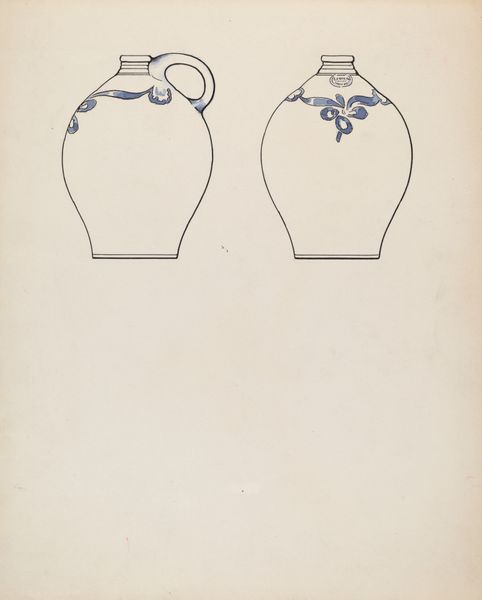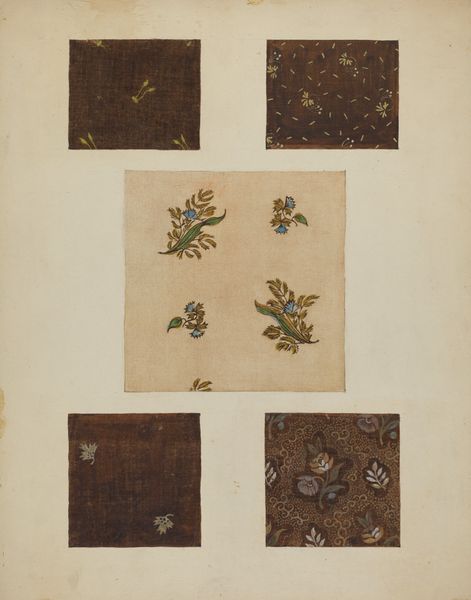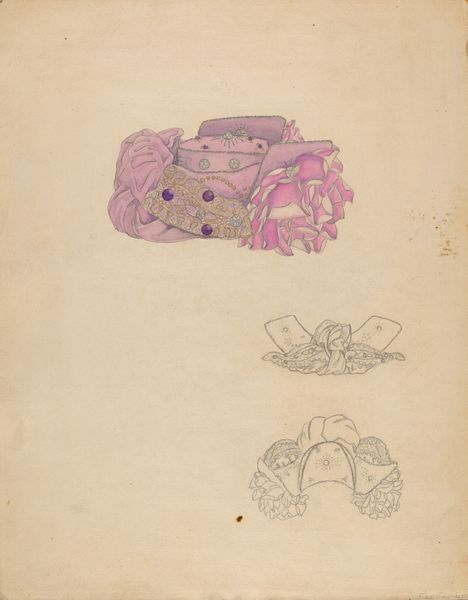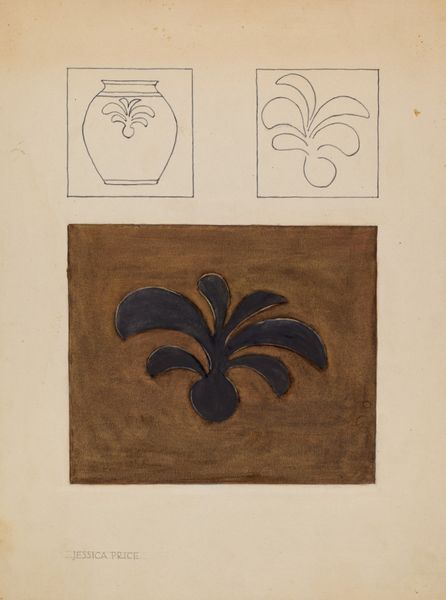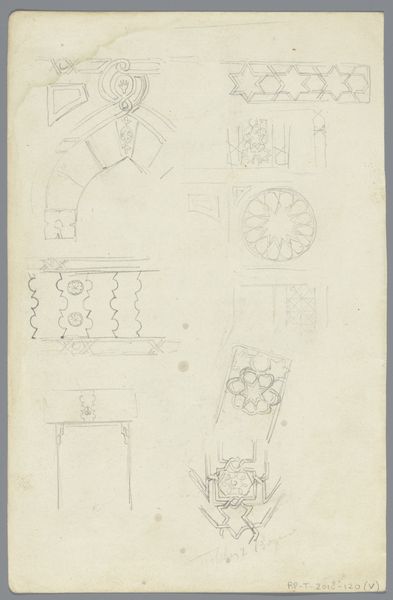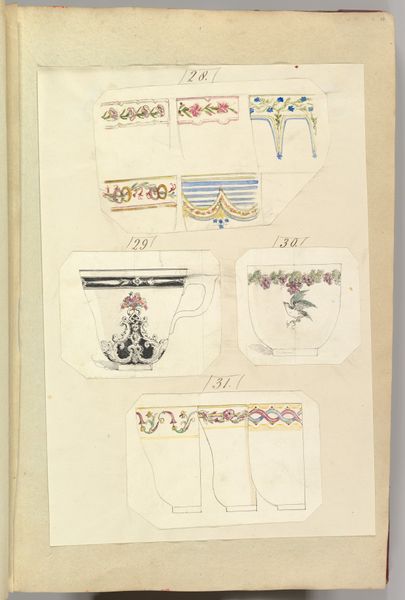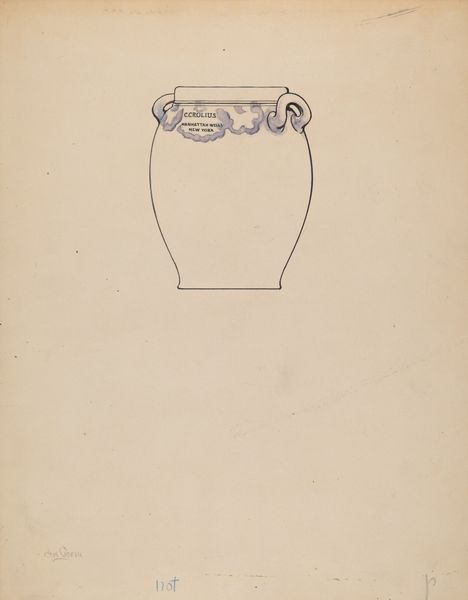
drawing, watercolor
#
drawing
#
watercolor
#
watercolour illustration
Dimensions: overall: 30.2 x 22.6 cm (11 7/8 x 8 7/8 in.) Original IAD Object: 8 1/2" Dia(top) 6 1/2" Dia(base) 8" High
Copyright: National Gallery of Art: CC0 1.0
Editor: This watercolor drawing is titled "Crock," made around 1937 by Janet Riza. The layout is quite unusual. I am struck by how the relatively plain depiction of the crock is juxtaposed with a second, more ornate illustration of flying birds. How would you interpret this choice, putting it in historical context? Curator: It is fascinating, isn't it? Consider the era – the late 1930s, deep in the Depression. We might view this work through the lens of economic and social disparities. Riza gives us an interesting binary of the everyday—the crock—with idealized images such as eagles. What does that contrast mean in terms of aspirational imagery versus reality? The birds appear on what looks like a decorative panel, almost as if on mass-produced items... Editor: I see that now. There is something almost "stamped" about them, lacking true originality, or real aspiration. It appears like it could be on packaging. Curator: Exactly. This brings forth themes of commodification and the contrast between handcrafted objects—perhaps represented by the crock—and the increasing dominance of mass-produced goods, and the imagery used to sell them. How can we relate this to contemporary debates surrounding consumerism and the authenticity of experience? Editor: That’s a great point! I hadn't considered how mass production and design would play into it. The crock stands apart because it is a plain object. Curator: And what does that plainness represent in a world increasingly driven by visual excess? Perhaps it speaks to sustainability, functionality, the “make do and mend” ethos prevalent in that time? Riza encourages us to consider the values embedded within everyday objects versus those projected onto us by consumer culture. It pushes us to ask: Who is profiting from that disparity, and at whose expense? Editor: I see now. This plain container isn't simply that; it embodies those themes of social commentary. Thanks so much. Curator: The pleasure was all mine.
Comments
No comments
Be the first to comment and join the conversation on the ultimate creative platform.
